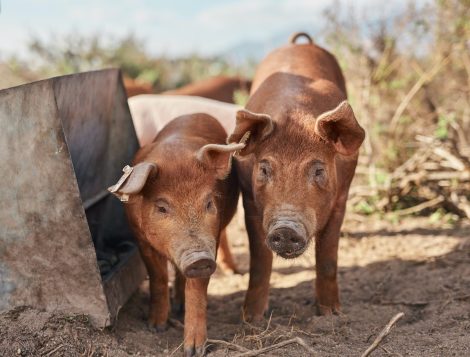Interview: As the holiday season approaches, what can we do to prevent African swine fever?


While African swine fever does not infect humans, how does it impact on our lives?
African swine fever (ASF) is a highly contagious disease which causes massive numbers of deaths in pigs within a very short period. Additionally, there is currently no vaccine nor treatment available, so this disease poses a severe threat to the pig rearing sector, particularly in the Asia-Pacific, where pig production is of major importance both in terms of pork consumption and the socio-economic representation of this animal.
This disease causes major economic losses due to its high mortality rate and the trade restrictions imposed on affected countries and poses a serious problem for food security worldwide.
In addition, the Covid-19 crisis has left populations which make a living from livestock farming or related activities (e.g., slaughter, meat processing) in an even more vulnerable position. The disease also has a devastating impact on the livelihood of some of the world’s vulnerable people, and affects the welfare of animals and biodiversity.
Why should we be particularly aware of this disease during holiday seasons?
Observation reveals that rising movements of people and the intensification of trade of live pigs, pork and pork products during the holiday season also increase the risk of ASF spread. Hence, it is vital to advise people travelling not to carry pork products, for example, possibly choosing alternate presents for holiday gifts.
ASF can be spread in myriad ways, and recent events and the speed of spread in the region illustrate the diverse possibilities of transmission. The virus can also survive on various materials and pork products and even in frozen pork products, making human behaviour an important factor in the spread of the disease.
ASF and the human factor:
The [ASF] virus can survive on various materials and pork products and even in frozen pork products, making human behaviour an important factor in the spread of the disease.
What further measures can we take to prevent or reduce the risks?
While travelling, we would advise avoiding carrying pork and pork products and to declare them upon arrival if you do. You should also avoid visiting infected farms. Finally, we advise ensuring that food leftovers and scraps are disposed of properly, and not just discarded or fed to pigs and other animals.
How do I talk about ASF with the community and people around me, to make them more aware of the risks?
There are communication materials prepared by OIE and partners available on our website, in the form of infographics, videos, social media tool kits targeted for various key stakeholders (like pig farmers, veterinarians, travellers, etc.) and in several languages. All can be accessed for dissemination and raising awareness.
- Individually, you can report any suspicion concerning sick or dead pigs and wild boar to local authorities. Avoid carrying pork products while travelling or make sure to declare them to transport authorities. Dispose of food waste containing pork products properly in secure bins and avoid feeding it to pigs.
- For pig farmers
- Do not feed untreated swill or kitchen scraps to your pigs. Swill used as feed should be prepared by boiling for at least 30 minutes.
- Prevent contact with wild pigs
- Do not allow visitors to enter production areas
- Clean and disinfect equipment, materials with approved products
- Keep new pigs isolated from the herd for 2 weeks, monitoring them for signs of illness
- Monitor pigs daily and immediately report suspicious cases
- For travellers
- Do not carry pigs or pork products. If you do, declare them to the transport authorities
- Do not visit farms unless strictly necessary
- Do not hunt wild pigs, if you are in regular contact with domestic pigs
For more information as well as resources for messaging campaigns:
This article originally appeared and can be accessed on the OIE’s regional website for Asia and the Pacific.
